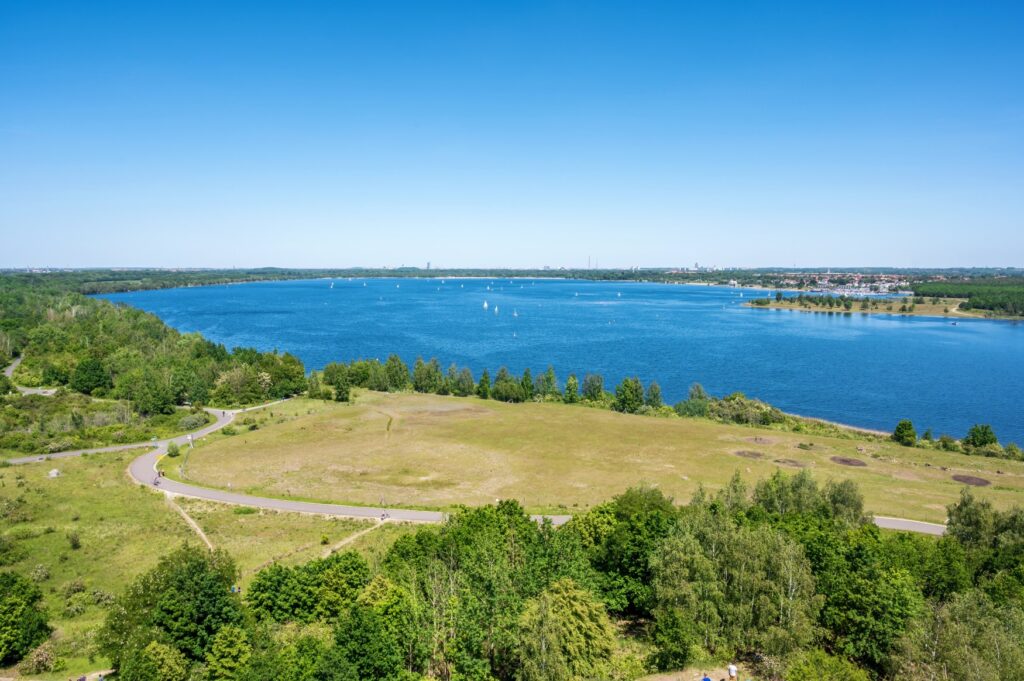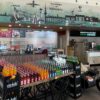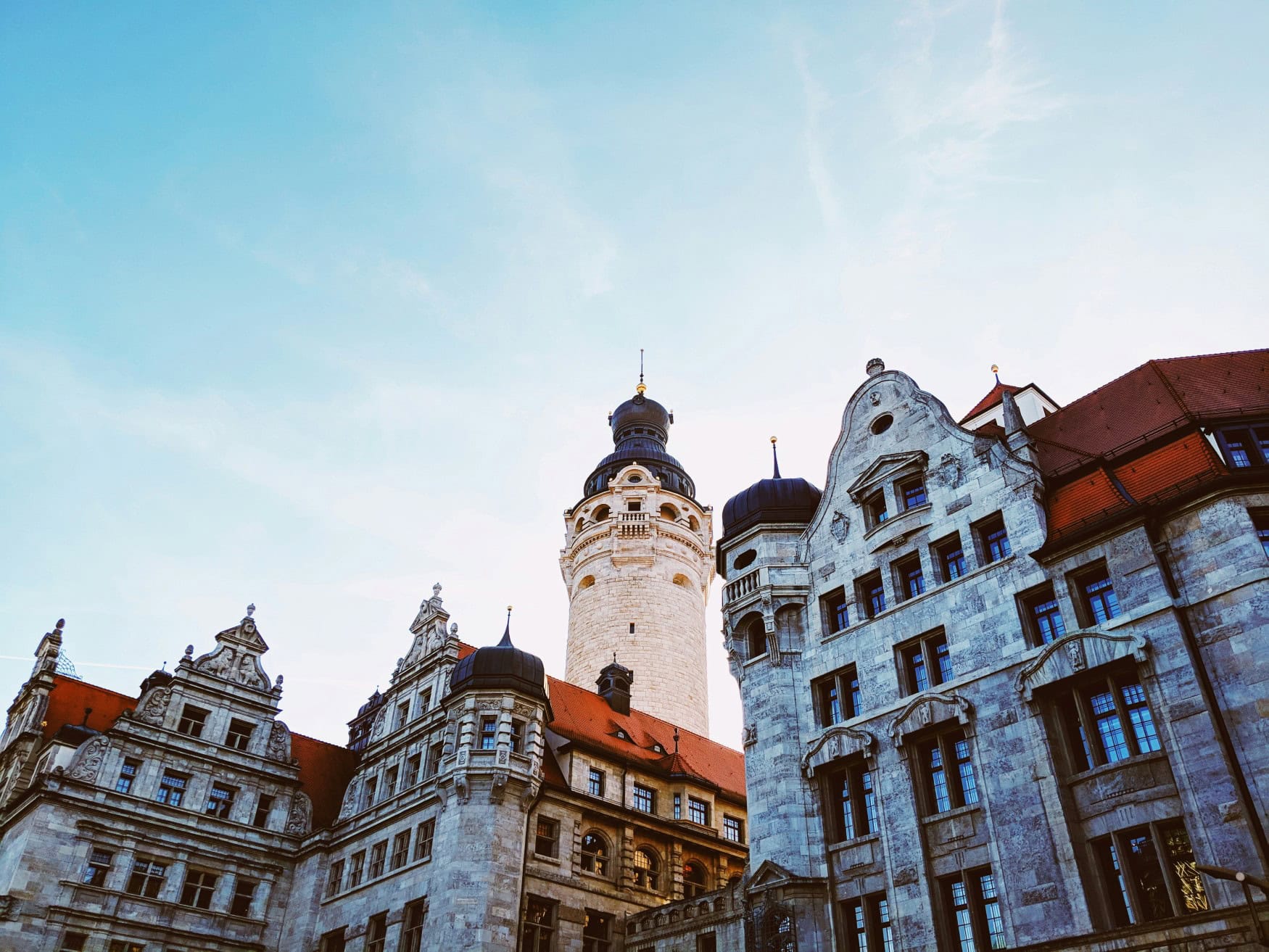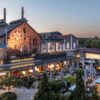Forget Berlin, the new trend city is Leipzig. Although “trend” is a bit unfair. Because Leipzig has been a real cultural hotspot for years. Concerts galore, a book fair once a year, exciting museums and, of course, soccer. Four matches will be held here during the European Men’s Football Championship.
Oversized Art in the Panometer
Germany was and still is an industrial country. But some buildings and constructions have fallen out of time, are outdated or are no longer needed in modern production processes. The question then arises: what to do with the leftovers? In the case of the Leipzig Gasometer, the city has found a completely creative solution. Since 2003, the artist Yadegar Asisi has been creating a gigantic panoramic image year after year in the industrial building in the Connewitz district, which was shut down in 1977.
Mount Everest has already been brought to life as a 360-degree image, the Battle of Leipzig in 1813 has been brought back to life and an insight into ancient Rome in the year 312 has been provided. The Panometer sets up an accompanying exhibition to go with each image, which provides a wealth of information and context for what is depicted. The painting and the exhibition “Monet’s Cathedral” have been on display at the Panometer since March 2024.
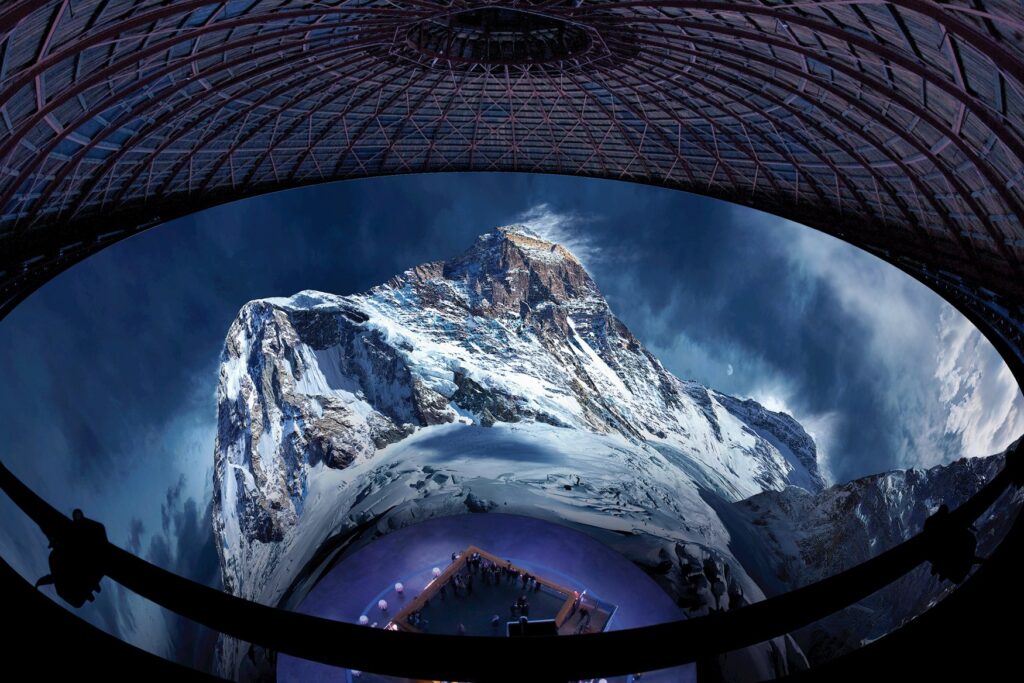
Browsing at the Book Fair
This tip is only valid once a year, but is particularly recommended: the Leipzig Book Fair. The annual reading spectacle has actually been taking place since the 17th century, and the book fair attracts more than 250,000 bookworms every March. Not only can you find the latest works here, which are talked about from feature pages to book blogs. Unpublished chapters and special editions also attract large crowds. There is also an extensive supporting program with award ceremonies, readings. And since 2014 the Manga Comic Convention perfectly rounds off the unique book experience.
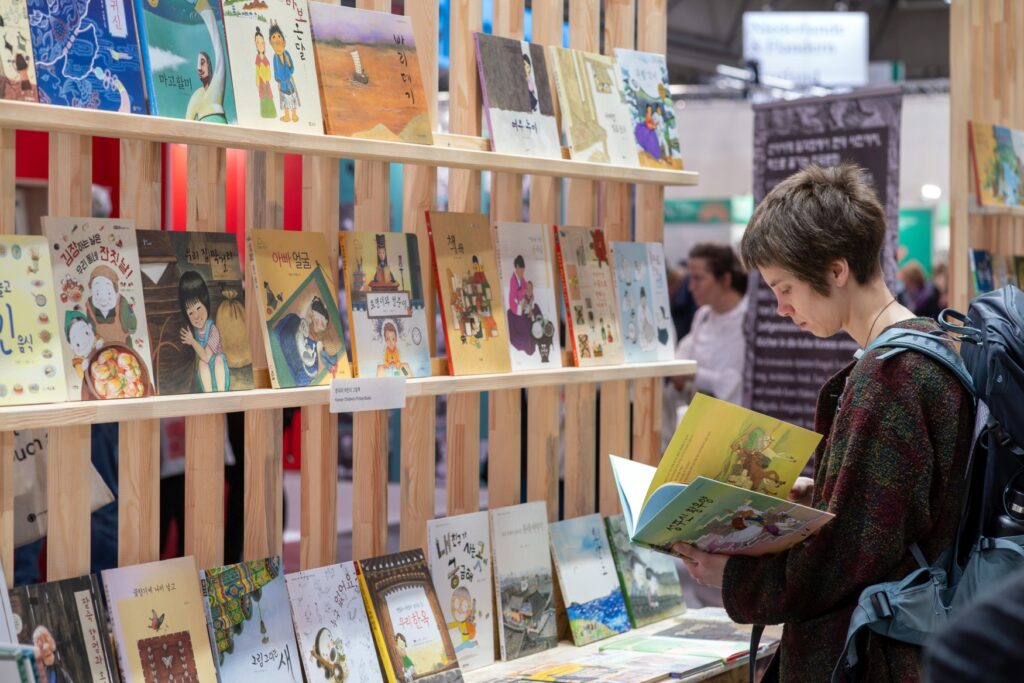
Going out on the Drallewatsch
Between Richard-Wagner-Platz on the northern edge of the city center and Burgplatz at the southern end is the so-called “Drallewatsch” in Leipzig. That’s the name of the pub and nightlife mile here, and it really has it all. More than 30 pubs, restaurants and bars crowd together on Drallewatsch and ensure that your evening’s entertainment is basically pre-arranged. These are not faceless franchises, but cult spots steeped in tradition. The Coffe Baum, for example, which is the oldest coffee house in Germany today, has been serving the black gold since 1711. The Ratskeller, on the other hand, has a more rustic feel. In the past, the city’s wine stock was actually stored here, but today you can enjoy the whole range of Saxon cuisine in the chic premises – and of course a fine drop or two.

Educate Yourself in Museums
“Traveling educates”, as the German poet Johann Wolfgang von Goethe is said to have said. And he should know, after all, he studied in Leipzig for almost three years. If, like Goethe, you can’t fill your head with enough fun facts and exciting stories, you can study your way through the city’s many museums to your heart’s content. In the middle of the city center, for example, you will find the Zeitgeschichtliches Forum (Forum of Contemporary History). In this modern museum, which is run by the Haus der Geschichte Foundation, you can gain a comprehensive and well-prepared insight into the history of and life in the GDR as well as the reunification process.
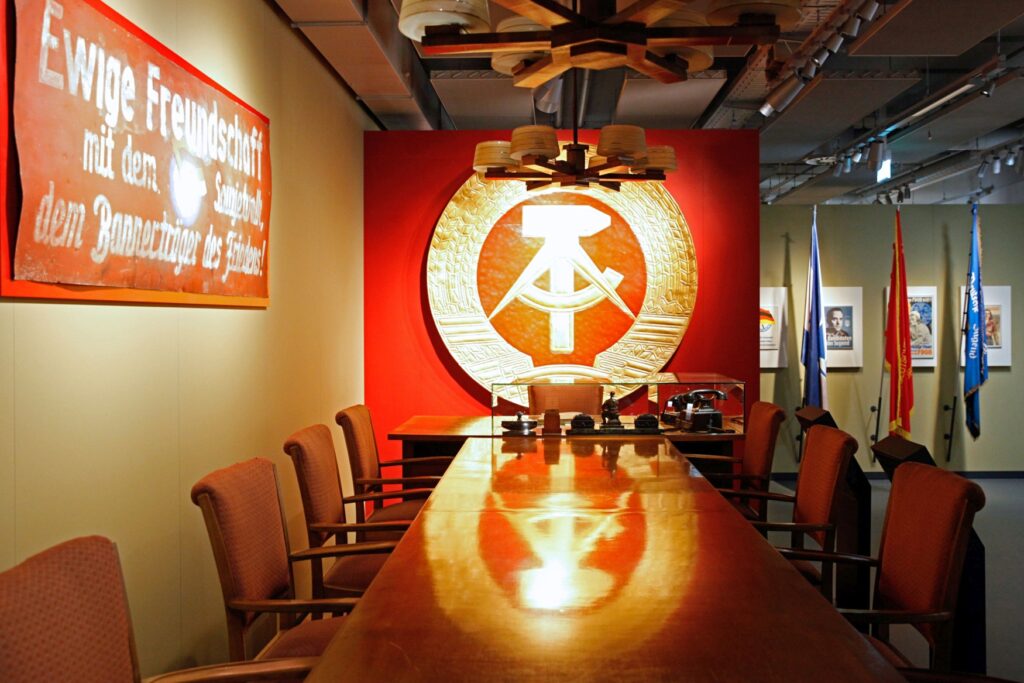
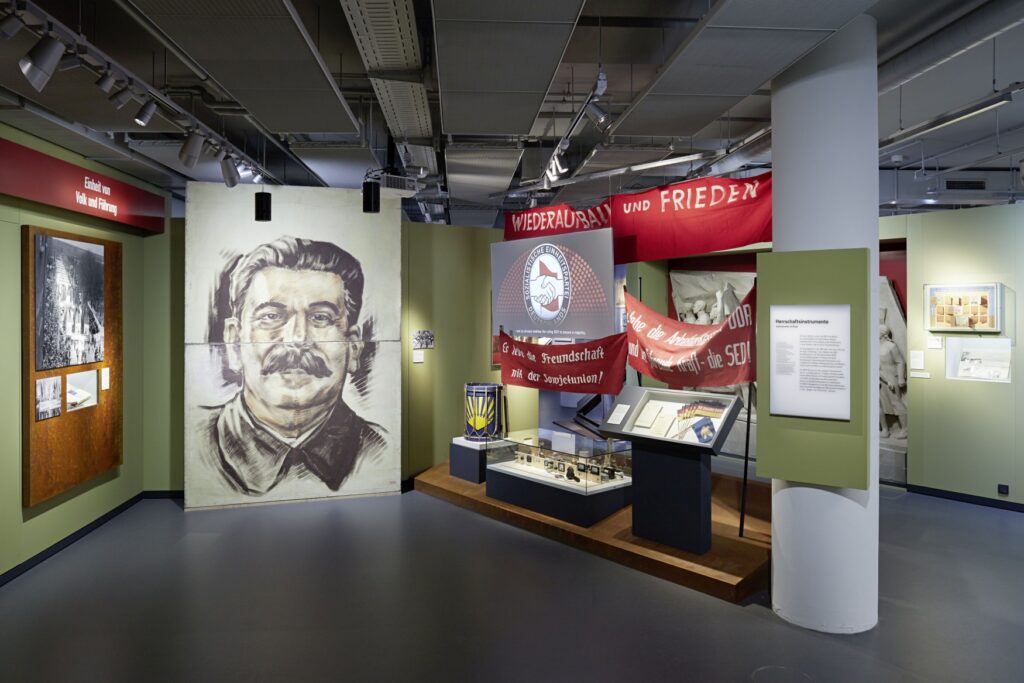
The Museum der bildenden Künste (Museum of Fine Arts), as the name suggests, is all about beautiful paintings and masterful sculptures. The collection focuses on Dutch painting from the 15th to 17th centuries and Italian painting from the 15th to 18th centuries. Also highly recommended: the German Museum of Books and Writing in the south of the city.
Stroll through the Old Town
Friends of diverse architecture will get their money’s worth in Leipzig’s Old Town, as it goes right through the ages. The two churches of St. Thomas and St. Nikolai are probably among the oldest buildings. Not only are they both beautiful to look at from the outside and inside. The Nikolaikirche was also the starting point of the Monday demonstrations that ultimately led to the peaceful revolution and reunification. You can also enjoy wonderful views from the market square. The Old Town Hall in particular, a magnificent Renaissance building from the 16th century, is a first-class photo opportunity. In front of the characteristic arcades, you can perfectly enjoy a small afternoon coffee and watch the hustle and bustle on the market square.
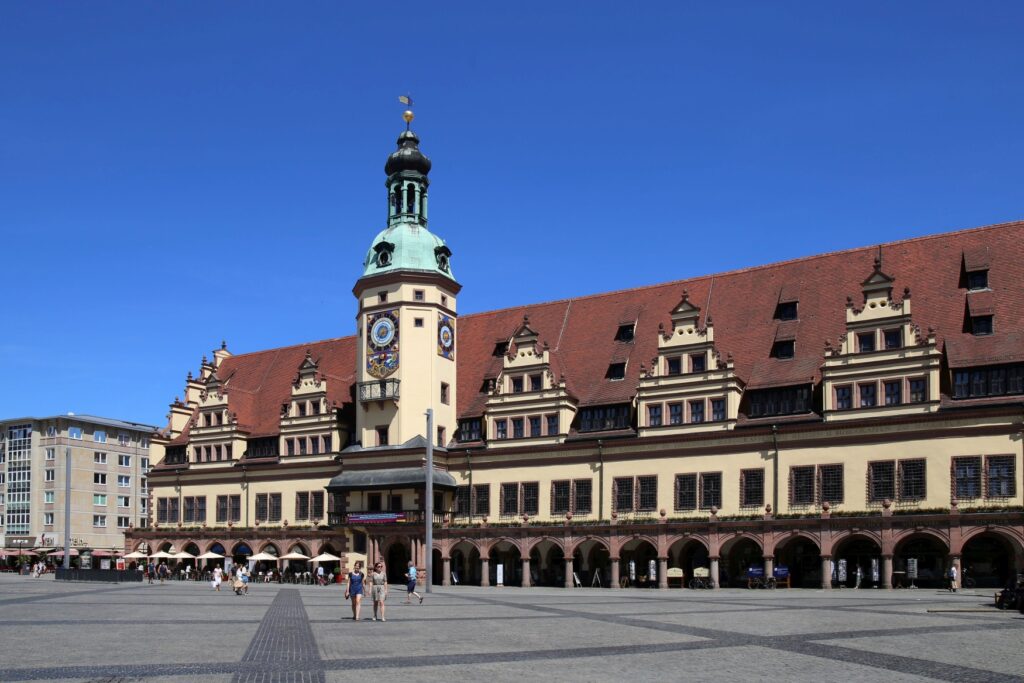
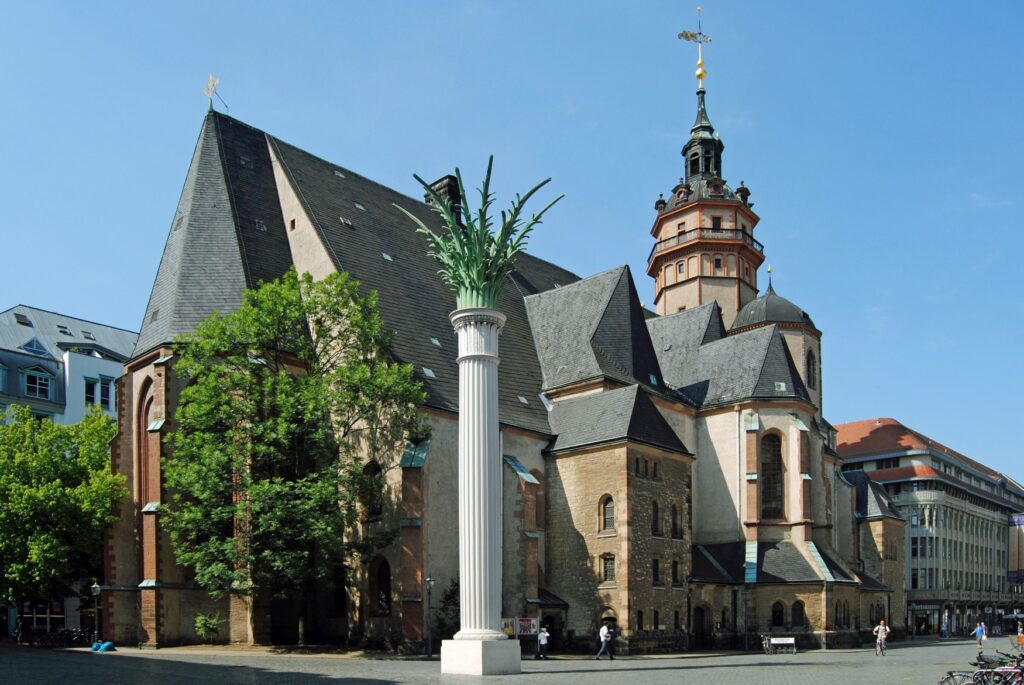
Marvel at the Monument to the Battle of the Nations
There used to be this guy called Napoleon (known from radio and television) who conquered or diplomatically bound a large part of Europe. In the Battle of Leipzig in 1813, however, French supremacy in Europe was permanently broken by a coalition of Russia, Prussia, Austria and Sweden, among others. Napoleon was forced to withdraw from Germany. The event is etched in German memory and in 1913, on the 100th anniversary, the Monument to the Battle of the Nations was inaugurated in Leipzig – not without the national spirit of the German Empire, of course.
At 91 meters, the unmissable stone colossus is still the tallest monument in Europe today. Inside, you can visit an exhibition about the history of the Battle of the Nations, but also about the history of the monument itself. This says almost more about the time in which it was built. And from the top of the monument you undoubtedly have the very best view of Leipzig and the surrounding area.
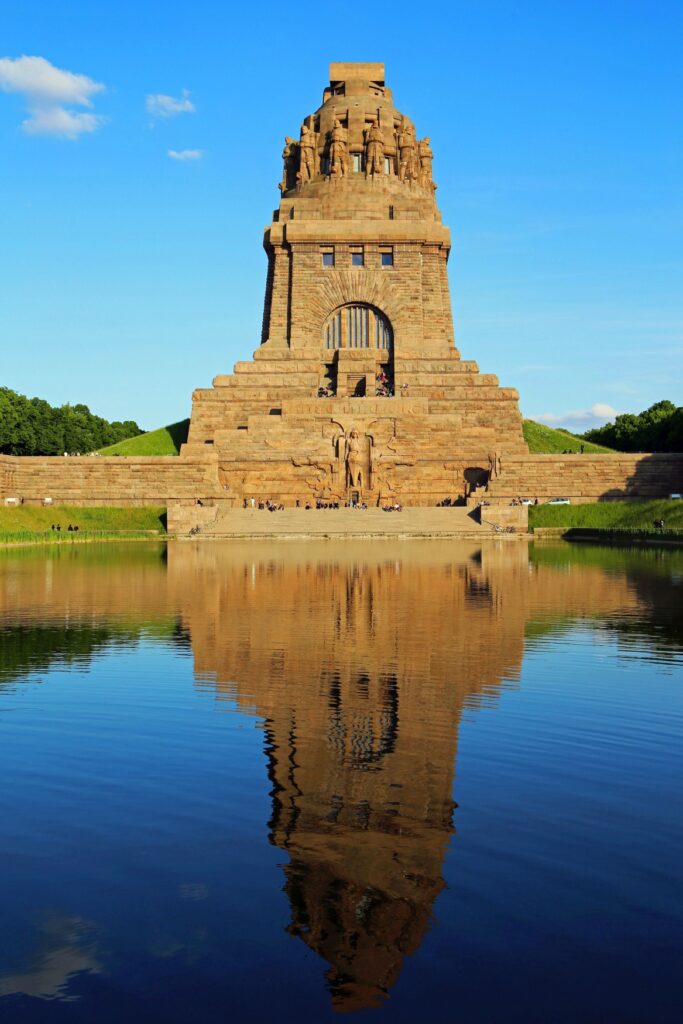
Relaxing in the Clara Zetkin Park
Leipzig is a pretty green city. There are several parks, especially along the River Elster, where you can enjoy the beautiful weather in the middle of nature in summer. The city’s green living room is Clara Zetkin Park. It is not only beautiful in summer, but is also within walking distance of the city center. In addition to all kinds of greenery, the park is home to an open-air stage and a music pavilion. And yes, there is also an open-air event program in summer. The Palmengarten further northwest is a real gem. Here, “nomen est omen” applies, because at the heart of the green area, which was laid out at the end of the 19th century, is a society house with an adjoining palm house. But that’s not all: the palm garden is home to many unusual tree species in the middle of Leipzig!
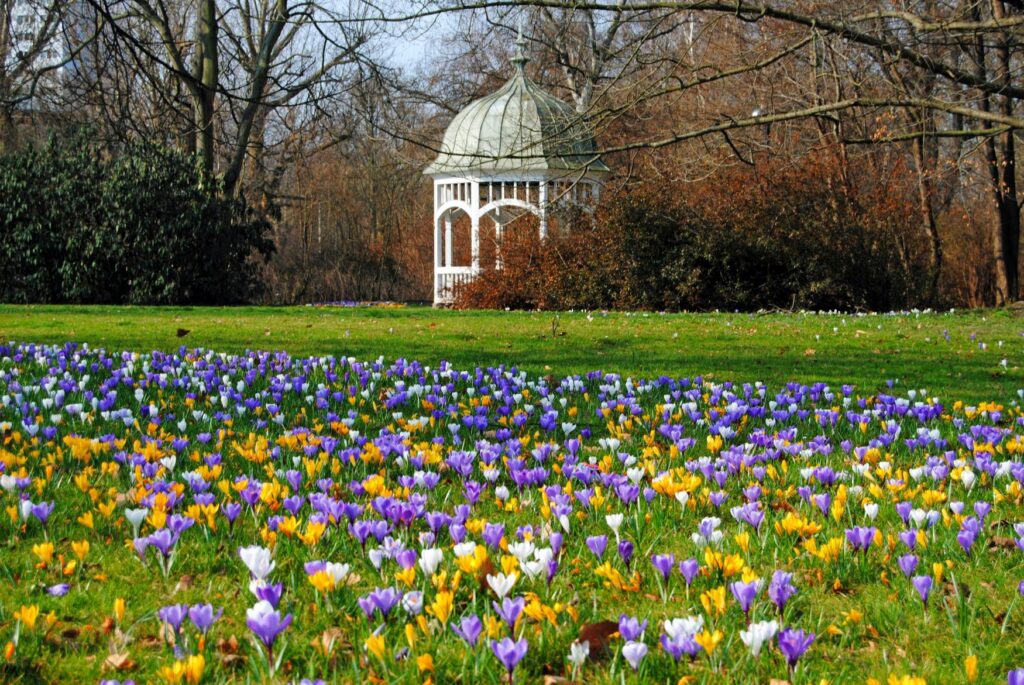
Splashing around in Leipzig’s Lakes
To be fair, it should be pointed out right away: Leipzig’s New Lakeland is actually located around Leipzig. More than 23 lakes make up the landscape. However, they were not created naturally, quite the opposite. The Neuseenland is post-mining landscape. In the past, the ground was diligently excavated here to mine brown coal. After the end of open-cast mining, the remaining holes were and are flooded to create valuable retreats for flora and fauna and to create a unique local recreation area. Today you can find countless leisure activities on the lakes, from camping sites to leisure pools and boat hire.
